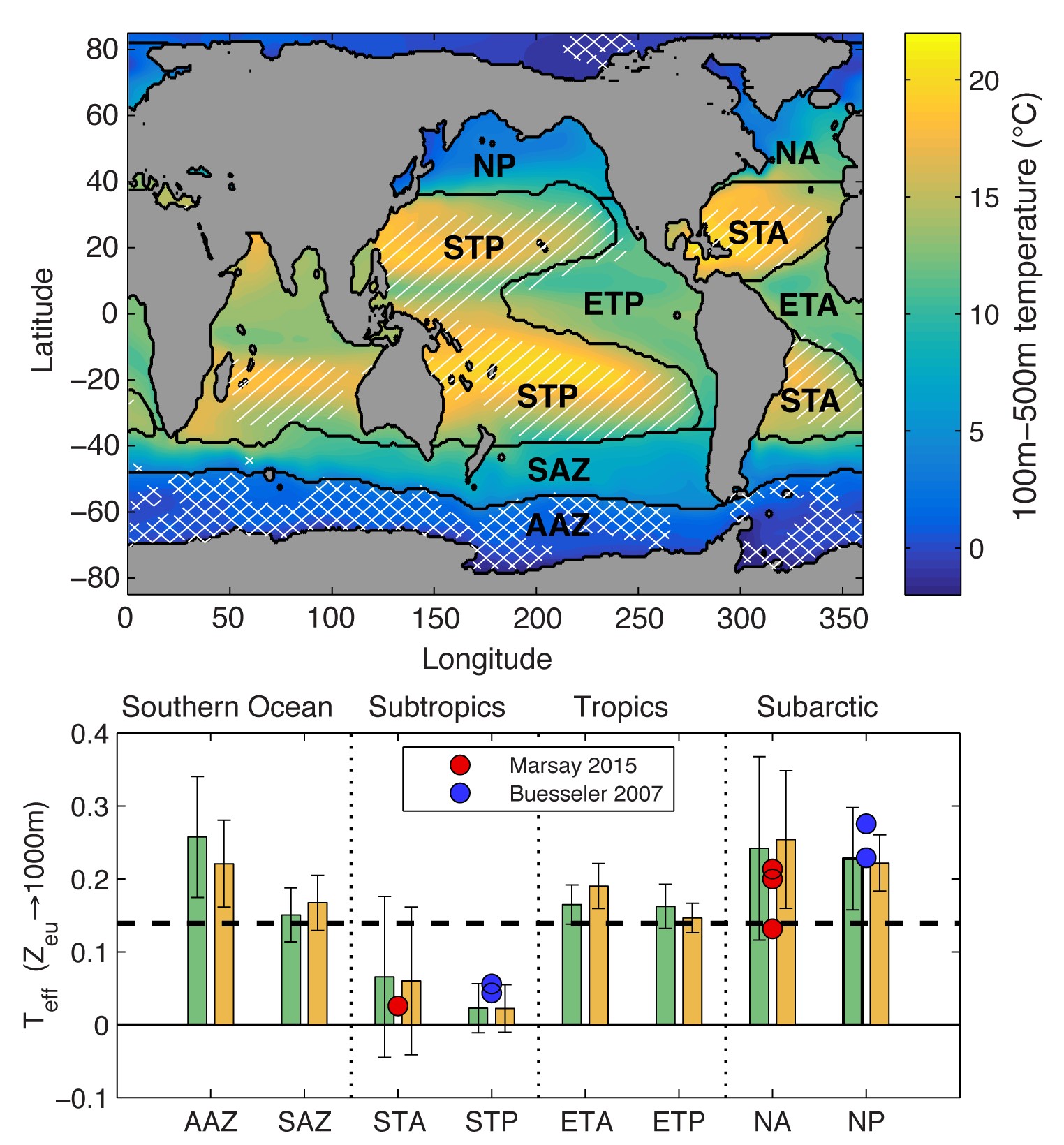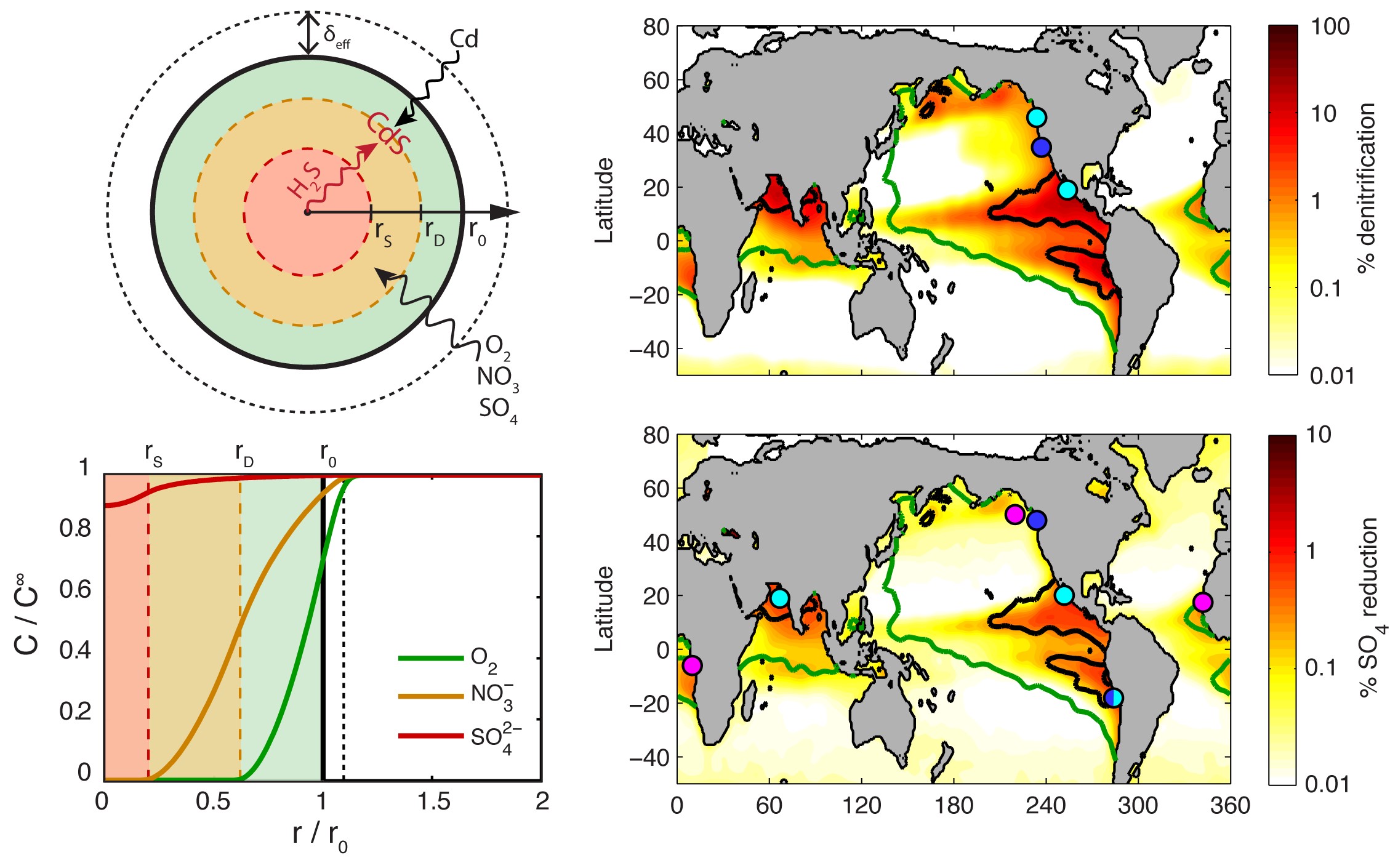Research
Particles
Sinking organic particles are the vectors that transport carbon to the deep ocean, where remineralized CO2 stays locked away for thousands of years.
Remineralization depth: Particle remineralization depth dictates the timescale of carbon sequestration in the ocean interior. Using a combination of diagnostic and data-assimilating models, our work has identified systematic large-scale variations in remineralization depth across latitude (Weber et al. 2016, PNAS; DeVries & Weber 2017, GBC). Particle remineralization is deepest in polar regions and shallowest in subtropical regions, with tropical regions falling between those extremes. This implies that export at high latitudes sequesters carbon most efficiently, and expansion of subtropical habitats in a warming climate will weaken the biological pump.

Particle transfer efficiency reconstructed from nutrient distributions in an ocean model. Top: Averaging regions which capture large-scale patterns of upper ocean temperature (colored) and phytoplankton community structure (shading). Bottom: Regionally averaged transfer efficiency (Teff) of particles from the base of the euphotic zone (zeu) to 1000m. Model results agree well with previous studies using neutrally buoyant sediment traps (red and blue dots). Adapted from Weber et al., 2016.
Anoxic microenvironments: Intense microbial respiration can locally deplete oxygen inside sinking organic particles. Using particle-scale models, our work has shown that a sequence of “microenvironments” forms under these conditions, which support anaerobic metabolisms (Bianchi & Weber 2018, Nature Geoscience). This phenomenon explains the broad distribution of denitrifying and sulfate reducing metabolisms and observed trace metal precipitation in low oxygen zones, and contributes globally significant rates of nitrogen loss. It may also contribute to enhanced particle transfer and biological pump efficiency in oxygen depleted waters (Weber & Bianchi 2020, FES).

Modeling particle microenvironments and their global impact. A model of a sinking, remineralizing organic particle (top left) predicts the internal consumption of O2, NO3, SO4 and formation of microenvironments where anaerobic respiration occurs (bottom left). This expands the oceanic niche of denitrifying (top right) and sulfate reducing (bottom right) bacteria beyond anoxic regions of the water column. Adapted from Bianchi & Weber, 2020.
